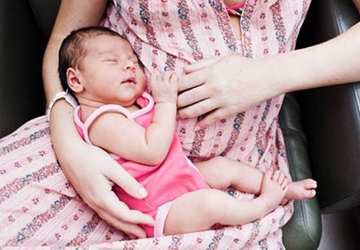Meta Description
“Is your face still swollen even after giving birth? Do your legs, feet, ankles, wrists, and arms seem large even as your stomach shrinks? Read on to find out more about Postpartum Swelling:”

What Is Postpartum Swelling?
Postpartum swelling occurs when pregnancy water weight accumulates in the body and continues after the pregnancy has finished.
After an abdominal or vaginal birth, postpartum swelling can develop.
You might think that now that your pregnancy is finished, the days of swelling are past. However, the excess fluid you gathered over nine months will not go overnight. An accumulation of extra fluid in the tissues beneath your skin causes postpartum swelling.
According to the American Pregnancy Association, a pregnant woman's body generates 50% more blood and bodily fluids to nourish the developing baby.
Swelling in the perineum after vaginal birth or around the incision if you had a C-section is also possible.
Causes Of Postpartum Swelling
The puffy postpartum look you have is due to any (or all) of the following reasons:
1. Pregnancy fluids that have accumulated during the last nine months. Moms with swelling (also known as edema) during pregnancy can store up to 6 pounds of fluids.
2. You received excess fluid during labor. If you had an epidural during birth, you were given IV fluids to keep your blood pressure from dropping. If you had a C-section, you would have needed IV fluids to get you through the procedure.
3. Pushing. Because of the pushes you exerted during delivery, additional pregnancy fluid may have moved to your limbs and face.
4. Sedentary behavior. The likelihood that you're not active after delivery (mainly if you had a C-section) makes it harder for your system to eliminate fluid.
5. Hormones. Your progesterone levels rose throughout pregnancy. One of the results of that additional progesterone is greater water retention, resulting in swelling throughout pregnancy and persistent swelling after delivery.

Postpartum Swelling Treatments
There are several things you may do to manage postpartum swelling:
1. Drink plenty of water to flush off the puffiness. It may be contradictory to add water to your body while attempting to shed water weight, but dehydration can contribute significantly to the body retaining those extra fluids. Drinking plenty will also keep your kidneys operating efficiently to eliminate waste (including extra fluids).
2. Move about as much as viable without going overboard. This is especially vital after a C-section, but it is also good advice after a vaginal delivery. Being active keeps fluids and blood from accumulating in your legs and aids the body in flushing those fluids out.
3. Avoid standing or sitting for extended periods. Both might result in fluid and blood pooling in your legs. Moving more allows your blood to move more freely throughout your body.
4. Circular rotations with your ankles — 10 times in each direction, counterclockwise and clockwise. Massage them as well, provided it is not painful. This prevents excessive fluid buildup in your feet.
How Long Does Postpartum Swelling Last?
Sweating and urinating will progressively discharge the collected fluids throughout the first postpartum week. Too slow for you? You can speed it up by using the swelling-reduction strategies listed above.
